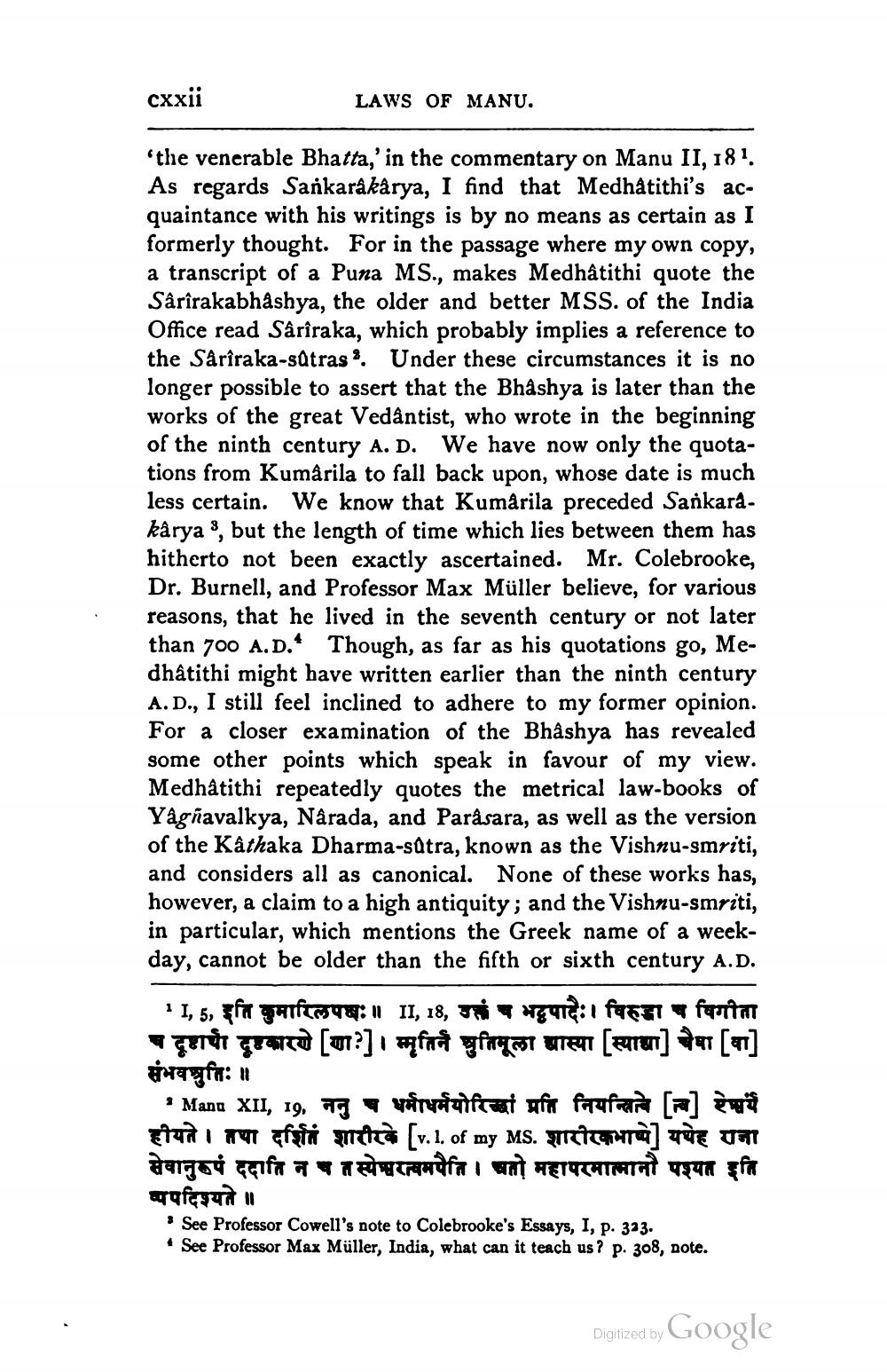________________
cxxii
LAWS OF MANU.
the venerable Bhatta,' in the commentary on Manu II, 181 As regards Sankarakarya, I find that Medhâtithi's acquaintance with his writings is by no means as certain as I formerly thought. For in the passage where my own copy, a transcript of a Puna MS., makes Medhâtithi quote the Sârîrakabhashya, the older and better MSS. of the India Office read Sârîraka, which probably implies a reference to the Sârîraka-strass. Under these circumstances it is no longer possible to assert that the Bhashya is later than the works of the great Vedantist, who wrote in the beginning of the ninth century A. D. We have now only the quotations from Kumarila to fall back upon, whose date is much less certain. We know that Kumarila preceded Sarkara. karya , but the length of time which lies between them has hitherto not been exactly ascertained. Mr. Colebrooke, Dr. Burnell, and Professor Max Müller believe, for various reasons, that he lived in the seventh century or not later than 700 A.D. Though, as far as his quotations go, Medhâtithi might have written earlier than the ninth century A.D., I still feel inclined to adhere to my former opinion. For a closer examination of the Bhashya has revealed some other points which speak in favour of my view. Medhâtithi repeatedly quotes the metrical law-books of Yågnavalkya, Närada, and Paråsara, as well as the version of the Kathaka Dharma-sätra, known as the Vishnu-smriti, and considers all as canonical. None of these works has, however, a claim to a high antiquity; and the Vishnu-smriti, in particular, which mentions the Greek name of a weekday, cannot be older than the fifth or sixth century A.D.
* 1, 5, ffa gaf meg: 1 II, 18, 7 5476: 1 faget font * qurd guard [ur?]ı fara yfagor uten [RU] 20 [at] Baufa: a
- Mana XII, 19, TE vofrestelfrant ufor farurarum [] euro Han fifti meta [v. 1. of my MS. Nicara] TE UM सेवानुरूपं ददाति न च तस्येमरत्वमपैति । चतो महापरमात्मानौ पश्यत इति referuntur
See Professor Cowell's note to Colebrooke's Essays, I, p. 323. • See Professor Max Müller, India, what can it teach us? p. 308, note.
Digitized by Google




